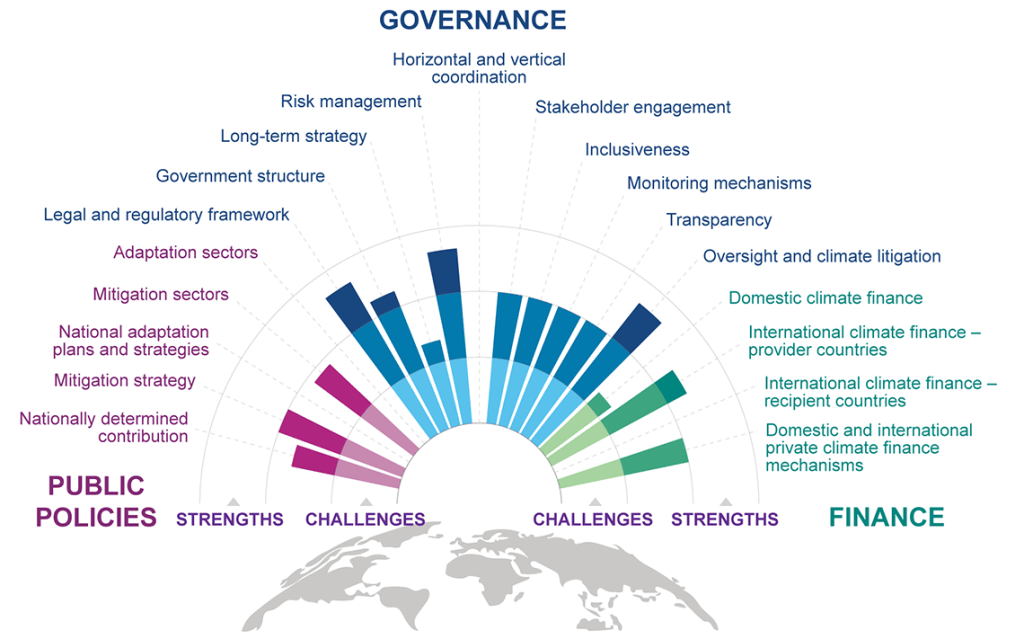A new 2035 NDC report was submitted to the UNFCCC in February to highlight new actions aimed at achieving Canada’s emissions reduction target of 45-50% below 2005 levels by 2035 (updated in December 2024 from 40-45% below 2005 levels by 2030).
Canada’s Parliament was prorogued on January 6, 2025, to hold a federal election. Prorogation suspends Parliament but does not dissolve it. Members of Parliament continue to hold their seats, as do Cabinet ministers, but no parliamentary business occurs. It reconvened on May 16, following an April 28 election, with a new Prime Minister, Mark Carney, and once again a Liberal minority government.
No climate policy was introduced before January 6. However, a 2035 NDC report was submitted to the UNFCCC in February to highlight new actions aimed at achieving Canada’s emissions reduction target of 45-50% below 2005 levels by 2035 (updated in December 2024 from 40-45% below 2005 levels by 2030). The next NDC submission is 2030.
Before the election, Carney’s campaign supported both climate change strategies and oil and gas in efforts to make Canada ‘an energy superpower’ in clean and conventional energy. First Nations Chiefs of Ontario point out that the new Building Canada Act, approved June 26, to support economic growth, has lacked meaningful consultation or study. It presently allows a single authorized federal minister to approve significant infrastructure projects of ‘national interest’ to override regulatory protections and bypass environmental and social safeguards, all without returning to Parliament for further approval. Many Canadians are seeking improvements to this legislation.
David Wright, an associate professor at the University of Calgary, has concerns that Carney’s scrapping of Canada’s consumer carbon tax may mean an oil and gas cap is next, which would put Canada’s pathway to climate change commitments in jeopardy. Plus, global political turmoil may create circumstances where climate action becomes secondary to perceived economic imperatives. He notes the statements from the recent G7 talks make little mention of climate action. Carney’s carbon tax changes already make the new NDCs outdated.
Canada’s Commissioner of Environment and Sustainable Development to the Parliament of Canada (Jerry DeMarco) reported in 2024 that the Implementation of measures in Canada’s 2030 Emissions Reduction Plan remains insufficient to meet the target of reducing greenhouse gas emissions (GHG) by 40% to 45% below 2005 levels by 2030. He sees that the federal government is advancing several mitigation measures to support progress in the net-zero transition, but not sufficient progress to reach its 2030 emissions targets. He recommends that Environment and Climate Change Canada, in collaboration with responsible federal organizations, should enhance the reliability of GGE reduction estimates for each measure, ensuring that budgetary, planning, and delivery decisions are informed by more accurate information.
A positive for Canadians is the Canadian Net-Zero Emissions Accountability Act (2021), designed to protect Canada from changing governments and agendas, with specific targets, plans, and reporting requirements. Canada is accountable to establish five-year national emissions reduction targets, 10 years in advance, on the path to net-zero emissions by 2050.
Data shows Canada’s GGEs in 2023 were 694 Mt CO2 eq, a 0.9% decrease from 700 Mt CO2 eq in 2022. From 2005 (761 Mt CO2 eq) to 2023 (694 Mt CO2 eq), GGEs decreased by 8.5%. The overall trend between 1990 and 2023 was an increase in GGEs from the oil and gas, agriculture, and transport sectors. The 8.5% decrease was primarily attributed to the electricity and heavy industry sectors.
Canada supports the deployment of non-emitting energy technologies through various programs, including the Smart Renewables and Electrification Pathways Program (2021). This is a $ 4.5 billion program aimed at achieving 100% Canadian electricity generation from non-GHG-emitting sources by January 1, 2035. Projects continue. Canada announced a new partnership with Newfoundland and Labrador in June, along with legislation to enable offshore renewable energy.
Canada has a robust framework of climate measures to reduce GGEs through its new ambitious target of 45 to 50% below 2005 levels by 2035. This includes a circular plastics economy.
Our new government’s mandate in 2025 is to reduce pollution, protect the environment, drive world-leading clean innovation, create jobs, and expand the middle class. Canadians await a plan to replace carbon pricing and a revisit of Canada’s mandate that 20% of new vehicle sales be sold as battery-powered or hybrid vehicles by 2026. EV sales are plummeting due to trade issues with the USA and the withdrawal of their electrification goals. Working with a diverse range of partners and stakeholders to establish conditions for success will be a key priority going forward, as we aim to meet 2035 targets and achieve net-zero by 2050.
Given the details in this post, Canada’s rating in emissions reduction is B.
View the 2025-2026 Canadian government strategy.

This post was submitted by Climate Scorecard Canada Country Manager, Diane Szoller.

